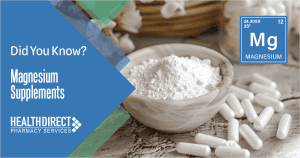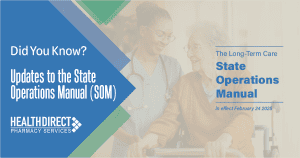What is Chronic Kidney Disease?
The National Kidney Foundation (NKF) Kidney Disease Outcomes Quality Initiative (KDOQI) defines chronic kidney disease as the presence of kidney damage or decreased kidney function for 3 or more months, irrespective of the cause.
Kidney damage:
- Albuminuria (AER ≥ 30 mg/24 hours; ACR ≥ mg/g (≥ 3 mg/mmol))
- Urine sediment abnormalities (red or white blood cells)
- Electrolyte and other abnormalities due to tubular disorders
- Pathologic abnormalities
- Structural abnormalities detected by imaging (ex. polycystic kidneys, hydronephrosis)
- History of a kidney transplant
Decreased kidney function:
- GFR < 60 ml/min/1.73 m²
Stages of CKD
- Staging of CKD is done according to cause of the disease, GFR (G-stages), and albuminuria (A stages).
- A declining glomerular filtration rate (GFR) is the hallmark of progressive kidney disease. The GFR is generally considered to be the best index of kidney function. Individuals with an estimated GFR below 60 mL/min per 1.73 m2 have a significantly increased risk for all-cause and cardiovascular mortality.
| GFR Stage | GFR (ml/min/1.73² | Terms |
|---|---|---|
| G1 | ≥90 | Normal or high |
| G2 | 60-89 | Mildly decreased |
| G3a | 45-59 | Mildly-moderately decreased |
| G3b | 30-44 | Moderately to severely decreased |
| G4 | 15-29 | Severely decreased |
| G5 | <15 | Kidney failure (D is added if treated by dialysis) |
| Albuminuria Stage | AER (Albumin excretion rate) mg/day | Terms |
|---|---|---|
| A1 | <30 | Normal-mildly increased |
| A2 | 30-300 | Moderately increased |
| A3 | 300 | Severely increased |
Many medications are cleared through the kidney. In kidney disease, these medications can accumulate and thus need to be administered at a reduced dose to decrease risk of adverse effects. Altered renal function can also affect dosing intervals of renally-eliminated medications. The following tables list several of the most common renally dosed medications (excluding antibiotics):
Antihistamines
| Medication | Dose Adjustment Recommendation |
|---|---|
| Cetirizine (Zyrtec) | CrCl 31 mL/minute or less: No more than 5 mg PO once daily. |
| Fexofenadine (Allegra) | CrCl 11 to 80 mL/minute/1.73 m2: Reduce the starting dose to once daily administration as follows: 60 mg PO once daily. CrCl 10 mL/minute/1.73 m2 or less: Not included in the FDA-approved label, some experts recommend 30 mg PO once daily. |
| Levocetirizine (Xyzal) | CrCl 50 to 80 mL/minute: 2.5 mg PO once daily. CrCl 30 to 50 mL/minute: 2.5 mg PO once every other day. CrCl 10 to 30 mL/minute: 2.5 mg PO twice a week; administered every 3 to 4 days. CrCl less than 10 mL/minute: Use is contraindicated. |
| Loratadine (Claritin) | CrCl less than 30 mL/minute: reduce initial dosage to 10 mg PO every other day. |
Cardio
| Medication | Dose Adjustment Recommendation |
|---|---|
| Atenolol (Tenormin) | CrCl 15 to 35 mL/minute/1.73 m2: Do not exceed 50 mg/day PO. CrCl less than 15 mL/minute/1.73 m2: Do not exceed 25 mg/day PO. |
| Apixaban (Eliquis) | Dosage adjustment is required in patients with nonvalvular atrial fibrillation. No dosage adjustment is required when apixaban is used for treatment or prevention of venous thromboembolism. Serum creatinine 1.5 mg/dL or more: 2.5 mg PO twice daily if the patient is 80 years or older and/or weighs 60 kg or less. This dose is recommended in any patient that meets at least 2 of 3 criteria (serum creatinine 1.5 mg/dL or more, age 80 years or older, weight 60 kg or less) |
| Dabigatran (Pradaxa) | For reduction in risk of stroke and systemic embolism in non-valvular atrial fibrillation: CrCl 15 to 30 mL/minute: 75 mg PO twice daily. Note: Patients with CrCl <30 mL/minute were excluded from the RE-LY trial (Connolly 2009). Recommended dose is based on pharmacokinetic data suggesting that this dose provides similar exposure to the recommended dose in patients with CrCl >30 mL/minute CrCl less than 15 mL/minute: Dosing recommendations are not provided by the manufacturer Deep vein thrombosis and/or pulmonary embolism (treatment): CrCl >30 mL/minute: No dosage adjustment necessary. CrCl ≤30 mL/minute: Avoid use. No clinical data as patients with CrCl ≤30 mL/minute were excluded from clinical trials (Schulman 2009; Schulman 2013; Schulman 2014). |
| Rivaroxaban (Xarelto) | Nonvalvular atrial fibrillation: CrCl 15 to 50 mL/minute: 15 mg once daily with food CrCl <15 mL/minute: Avoid use; apixaban or warfarin is preferred. Treatment of Deep Vein Thrombosis (DVT) and Pulmonary Embolism (PE) and Reduction in the Risk of Recurrence of DVT and PE: CrCl 15 to <30 mL/minute: Avoid use. Patients with CrCl <30 mL/minute were excluded from clinical trials (EINSTEIN Investigators 2010; EINSTEIN-PE Investigators 2012; Weitz 2017); no other clinical data are available to support use in this population. *Other indications with renal dosing recommendations exist. See manufacturer’s recommendations. |
| HCTZ | CrCl < 30 mL/min: do not use, generally not effective. |
| Spironolactone (Aldactone) | CrCl 10 mL/minute/1.73 m2 or more: No dosage adjustment needed; however, monitor renal function closely as hyperkalemia is more likely to occur in patients with renal impairment. For heart failure patients with CrCl 30 to 49 mL/minute, clinical practice guidelines recommend 12.5 mg PO once daily or every other day for the first 4 weeks followed by 12.5 to 25 mg PO once daily. CrCl less than 10 mL/minute/1.73 m2: Avoid use. |
| Fenofibrate (Tricor) | CrCl >30 to 80 mL/minute: Use lowest available tablet strength (if a formulation is not available in a strength that is ≤67 mg, then an alternate formulation should be used); do not titrate (expert opinion). CrCl ≤30 mL/minute: Use contraindicated. |
| Gemfibrizol (Lopid) | CrCl 10—50 mL/min: Consider alternative therapy per the manufacturer, reports of worsening renal insufficiency have occurred during use of gemfibrozil in those with a baseline SCr > 2 mg/dL (i.e., estimated CrCl of < 50 mL/min based on a 70 kg |
CNS
| Medication | Dose Adjustment Recommendation |
|---|---|
| Duloxetine (Cymbalta) | CrCl <30 mL/minute: The manufacturer’s labeling recommends to avoid use; duloxetine and inactive metabolites AUC expected to increase significantly. When necessary, some experts recommend cautious use of lower initial doses (eg, 30 mg daily); titrate slowly, not to exceed 60 mg once daily; monitor closely for adverse effects |
| Gabapentin (Neurontin) | CrCl > 30—59 mL/min: Total dose range 400—1400 mg/day PO in 2 evenly divided doses. CrCl > 15—29 mL/min: Total dose range 200—700 mg/day PO given in one daily dose. CrCl = 15 mL/min: Total dose range 100—300 mg/day PO given in one daily dose as 100, 125, 150, 200, or 300 mg. CrCl < 15 mL/min: Reduce daily dose in proportion to CrCl (e.g., CrCl = 7.5 mL/min should receive one-half the dose that patients with CrCl of 15 mL/min receive). |
| Levetiracetam (Keppra) | CrCl 50 to 80 mL/minute: 500 to 1,000 mg PO immediate-release tablets every 12 hours; 1,000 to 2,000 mg extended-release tablets every 24 hours; Maximum daily dose is 2,000 mg. CrCl 30 to 49 mL/minute: 250 to 750 mg PO immediate-release tablets every 12 hours; 500 to 1,500 mg extended-release tablets every 24 hours (Keppra XR and generic equivalents); Maximum daily dose is 1,500 mg. CrCl less than 30 mL/minute: 250 to 500 mg PO immediate-release tablets every 12 hours; 500 to 1,000 mg extended-release tablets every 24 hours (Keppra XR and generic equivalents); Maximum daily dose is 1,000 mg. |
| Pregabalin (Lyrica) | CrCl 30 to 60 mL/minute: 75 to 300 mg/day PO given in 2 or 3 divided doses for immediate-release formulations; reduce dose by 50% for extended-release tablets. CrCl 15 to 30 mL/minute: Immediate-release formulations: 25 to 150 mg/day PO given in 1 or 2 divided doses. Use of the extended-release tablet is not recommended. CrCl 15 mL/minute or less: 25 to 75 mg PO once daily. Use of the extended-release tablet is not recommended. |
| Tramadol (Ultram) | CrCl less than 30 mL/minute: Avoid use of extended-release tramadol. For the immediate-release tramadol, increase dosing interval to 12 hours; Max: 200 mg/day. |
GI
| Medication | Dose Adjustment Recommendation |
|---|---|
| Famotidine (Pepcid) | Symptomatic nonerosive GERD: CrCl 30 to 60 mL/minute: 20 mg once daily. CrCl less than 30 mL/minute: 10 mg once daily or 20 mg every other day. Erosive esophagitis due to GERD, diagnosed by endoscopy: CrCl 30 to 60 mL/minute: 20 mg once daily or 40 mg once daily or 40 mg every other day. CrCl less than 30 mL/minute: 10 mg once daily or 20 mg once daily or 20 mg every other day. |
Miscellaneous
| Medication | Dose Adjustment Recommendation |
|---|---|
| Colchicine | Gout flare prophylaxis: CrCl 30-80 ml/min: No dosage adjustment necessary. Alternatively, some experts limit the dose to 0.6 mg daily in patients with CrCl 30 to 60 mL/minute CrCl <30 ml/min: Consider alternate therapy (preferred). If alternate therapy is not available/ tolerated, the following adjustment is recommended: 0.3 mg once daily (or 0.6 mg every other day); titrate only if necessary and with extreme caution. Maximum: 0.6 mg/day Gout flare treatment: CrCl < 30 ml/min: Consider alternate therapy (preferred). If alternate therapy is not available/ tolerated, the following adjustment is recommended: 1.2 mg at the first sign of flare, followed in 1 hour with a single dose of 0.6 mg; repeat treatment should not occur for at least 14 days. |
| Nitrofurantoin (Macrobid) | Avoid in individuals with creatinine clearance <30 mL/min or for long-term suppression of bacteria. The long-term use of nitrofurantoin for suppression should still be avoided because of concerns of irreversible pulmonary fibrosis, liver toxicity, and peripheral neuropathy. |
| Sitagliptin (Januvia) | eGFR 30 to 44 mL/minute/1.73 m2: 50 mg PO once daily. eGFR less than 30 mL/minute/1.73 m2: 25 mg PO once daily. |
| Alendronate (Fosamax) | CrCl less than 35 mL/minute: Not recommended. |
| Memantine (Namenda) | CrCl 5 to 29 mL/minute: A target dose of 5 mg PO twice daily of immediate-release (IR) formulations is recommended. A target dose of 14 mg PO once daily of the extended-release (XR) form is recommended. |
| Metformin (Glucophage) | eGFR >45 to <60 mL/minute/1.73 m2: No dosage adjustment necessary. Metformin plasma concentrations may be higher compared to patients with an eGFR ≥60 mL/minute/1.73 m2; increase monitoring of renal function (eg, every 3 to 6 months) eGFR 30 to 45 mL/minute/1.73 m2: Initiation of therapy: Use generally not recommended (AACE [Garber 2020]; ADA 2020; manufacturer’s labeling); however, initial therapy with 500 mg once daily with the evening meal titrated to 500 mg twice daily, if tolerated, with close monitoring of kidney function has been recommended by some experts (Lalau 2018; Wexler 2021b). Continuation of existing therapy: May continue at a reduced dose up to a maximum of 500 mg twice daily with close monitoring of kidney function (ADA [Lipska 2011]; Inzucchi 2014). eGFR <30 mL/minute/1.73 m2: Use is contraindicated. |
| Metoclopramide (Reglan) | CrCl >10 to 60 mL/minute: Administer ~50% of usual total daily dose. CrCl ≤10 mL/minute: Administer ~33% (or less) of usual total daily dose. |
References
- National Kidney Foundation. K/DOQI clinical practice guidelines for chronic kidney disease: evaluation, classification, and stratification. Am J Kidney Dis 2002; 39 (Suppl 1):S1.
- Clinical Pharmacology. Monographs.
- UpToDate. Monographs. Accessed 7/18/21.




